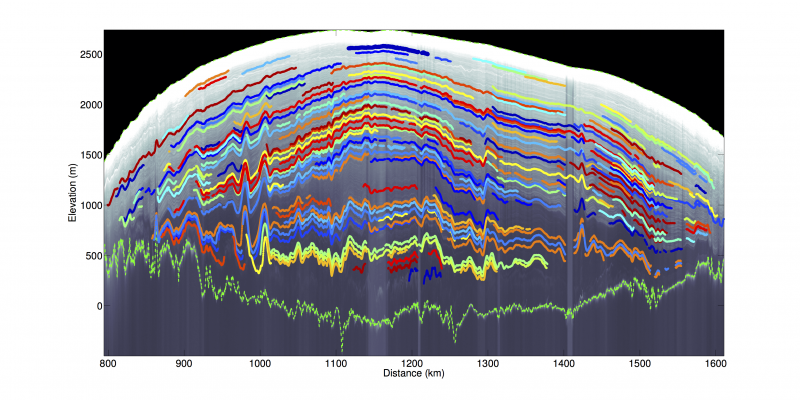By: Tom Wagner, Cryosphere Program Manager, Earth Science Division, Science Mission Directorate, National Aeronautics and Space Administration

The 2014 winner of the National Aeronautics and Space Administration (NASA) Cryospheric Sciences Most Valuable Player award is Joseph A. MacGregor of University of Texas at Austin's Jackson School of Geosciences, for his work synthesizing ice penetrating radar records to produce a 3-dimensional age map of the Greenland Ice Sheet. The work represents a substantial contribution to Arctic research. The results will constrain ice sheet models and assist in the interpretation of paleoclimate information to improve our understanding of the Greenland ice sheet's contribution to sea level change.
Background
The NASA Cryospheric Sciences program awards a Most Valuable Player award annually at its Program for Arctic Regional Climate Assessment (PARCA) meeting. The award recognizes outstanding individual accomplishment by a NASA-supported scientist working in the cryospheric sciences. It is intended to encourage and celebrate creative or original work, especially that which exemplifies Thomas Edison's maxim "Genius is one percent inspiration, ninety-nine percent perspiration." The award considers any contribution, but especially those that involve synthesis of large or multidisciplinary data sets.

More information about MacGregor's project, "Radiostratigraphy of the Greenland Ice Sheet" is available here or by contacting Joseph MacGregor (joemac [at] ig.utexas.edu).
